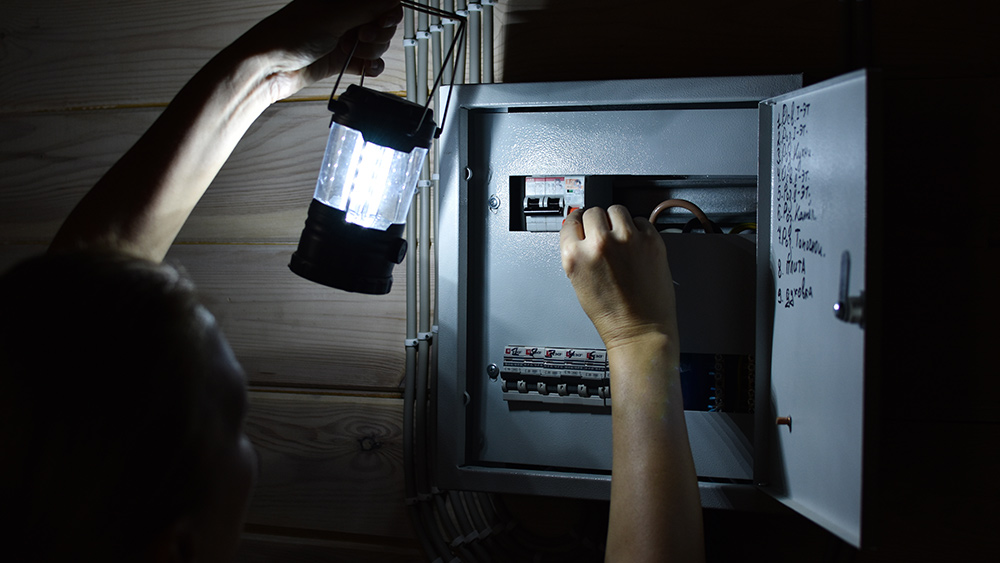
There are hundreds of different survival skills that can help prepare you for unique situations, but learning new ones or honing what you already know does not necessarily involve spending a weekend roughing it in the woods or joining a survival boot camp.
While many of the most important hands-on training does occur outdoors, there are other extremely valuable survival skills you and your family can learn right now, hands-on inside your home – while sitting around a table or moving about inside even a small apartment.
Here’s an initial list you can practice one by one, but don’t just try them out. Make sure you all practice them regularly. Getting really GOOD at them will make a big difference once things get tough. (h/t to SurvivalSullivan.com)
Knot-tying
There will be a lot of situations in which you’ll need a good, solid knot. While there are tons of various knots out there to learn, you only need to know one good knot, such as the clove hitch knot, and practice it over and over again. Learning two or three should be more than enough before you move on to learning the next skill.
Learning how to tie a variety of survival knots can begin by simply watching how-to videos, and following along with any scrap piece of rope you happen to have laying around. You can practice and perfect your knot-tying while sitting at the table watching television over the course of many nights or even weeks when you are spending time inside your home.
Rope and net making
Learning how to make your own rope, cordage, or nets will not only increase your vital survival skills but allow you to create a stockpile of essential preparedness gear cheaply – as well as add yet another solid bartering service or supplies to your preparedness plan.
Basket weaving
Baskets can be used in fishing, food gathering, hunting, trapping and a host of other ways during a long-term disaster. Ordering some basic supplies and either reading or watching a how-to basic basket weaving video will help you get started on the path to mastering this traditional survival and homesteading skill in a matter of just a few hours.
Baskets of all shapes and sizes will be a valuable bartering item during an SHTF event. If you can collect some reeds or similar material from your backyard, you will have all the supplies you need to make a basic basket.
Sewing
In any long-term SHTF or bug in/out situation, your clothes and other items will be damaged. You will need to be able to stitch clothes, backpacks and tents back together – and you will need to do it by hand in a survival situation or out on the trail. Learning basic stitches will get you rolling and may also help you be better prepared to be your own first responder if stitches are ever required during an SHTF event. Check out survival sewing – a complete guide to sewing and repair in the wilderness.
Whittling wood
You can start whittling wood with nothing more than a quality knife and a piece of scrap wood or a piece of a tree branch that you picked up in the yard.
Buying books or an online course about whittling can get you started but there are many entirely free YouTube videos that can also help beginners learn the basics and safety guidelines needed to successfully complete projects like making a spike, spear, spoon or feathered wood.
Cache building
Putting together survival caches is a short-term project that can be buried or hidden later when you are outdoors. Survival caches hold vital supplies, food, ammunition, or weapons that can help save your life, and get you home during an SHTF situation.
Scrap PVC pipe in your garage, a metal trash can or a small metal box all make good cache containers. The PVC pipe will be the most weatherproof. Items commonly stored inside of a survival cache include a first-aid kit, MREs, knife, ammunition, folding rifle, emergency Mylar blankets, lighters, water purification tablets, Lifestraw, etc.
Route planning
Do you have a detailed plan for getting home from work, school, or a frequently visited place via multiple routes or on foot? Printing off a detailed map of the exact area you will be traveling and routing multiple ways to get home or to a bugout location – even if you have to do it on foot – will help you be better prepared for an actual trek during less than easy circumstances if an SHTF event occurs when you are not comfortably inside of your home.
Soapmaking
While cleanliness may not seem like a top priority when SHTF, the best way to prevent the spread of germs and bacteria is to keep both yourself, your family and your home clean. Learning how to make soap will help keep a stockpile of a multitude of bars that can be used to keep bodies clean during a long-term disaster.
Physical fitness
There is no need to buy a gym membership, trendy and expensive exercise equipment or even leave your home to get in better physical shape to survive a long-term disaster – where intensive manual labor will likely be involved. (Related: Prepper fitness: Why is physical health important for survival?)
Use canned goods or plastic one-gallon jugs filled with water as weights to do arm-strengthening exercises. You can do jumping jacks, run in place, walk up and down stairs repeatedly, step up and down onto a short stool repeatedly, use kitchen counters to press your hands against for modified push-ups, and do leg lifts alone or with Ziploc bags filled with rice duct taped around your ankles to add extra resistance.
Preparedness and survival mindset
Probably the most important survival skill is your mental attitude. In an emergency or SHTF, something most of us have never experienced, keeping our cool and remaining calm and assertive are some of the most important things we could do.
Without it, you won’t be able to put into practice any of the skills discussed here. You should take a good, honest look at yourself, your family and your situation, and figure out to what extent you’re ready for a disaster, and whether or not you have what it takes to survive it.
Keep a positive mindset and remember that every little thing you learn, every skill you improve upon, and every bottle of water you stockpile will increase your chance of survival when SHTF.
Watch this video to learn 10 beginner bushcraft and survival skills.
This video is from the Daily Videos channel on Brighteon.com.
More related stories:
True survivalists never stop prepping: Do you have these 4 traits necessary to survive?
Mental preparedness: How to think like a survivalist.
Sources include:
Please contact us for more information.




















